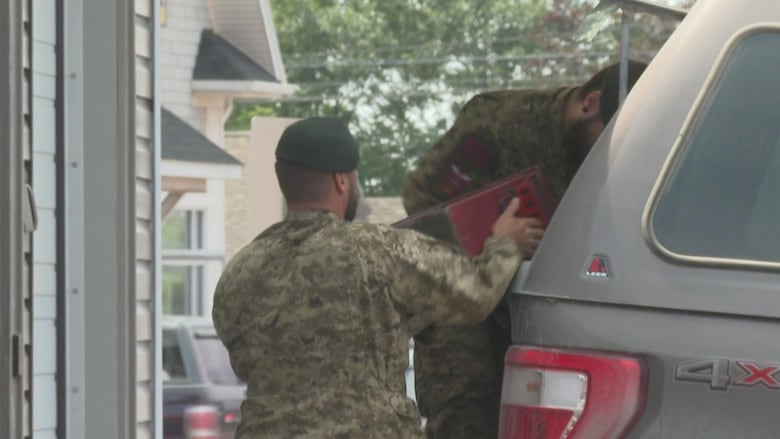Items removed from Kensington town hall don't date back to Second World War after all
Turned out to be a piece of munition used for training and a spent hobby rocket motor

The Canadian Armed Forces says two items that were removed from the municipal building in Kensington, P.E.I., earlier this week did not date back to the Second World War, as first believed.
A resident dropped two pieces of military-like equipment off to police based in that building on Monday.
Fearing they could have the potential to explode, officials evacuated the premises as a precaution. The building stayed shut until Canadian Armed Forces members arrived from the base in Gagetown, N.B., around noon on Tuesday to take the equipment back with them for examination.
Police had told CBC News that one of the items appeared to be a mortar shell from the 1939-1945 global conflict, but in an email on Tuesday, a military spokesperson said the items have now received a closer inspection.
"The first was a Royal Canadian Air Force (RCAF) training munition/simulated ordnance. These are training aids used by RCAF pilots and dropped on practice targets to improve drop accuracy," the email read. "It was not a WWII mortar shell."
The second item was identified as a spent rocket motor — not a rocket fuel canister as previously believed.
"There were no military stampings or identifying military markings, and the propellant was expended," officials wrote. "It resembled an amateur/hobby rocket."
Do not remove the object; leave it in place. If possible, a photo of the item is very useful to aid in early identification.— Canadian Armed Forces email
The email said the motor could have been a fire hazard if it had not already been used. The training munition has only a small charge, designed to give off coloured smoke as a visual marker for the training exercise.
Officials said if other people find any type of suspected unexploded devices, they should call their local police force, who will liaise with the Canadian military as the Kensington Police did in this instance.
"Do not remove the object, leave it in place," the email said.
"If possible, a photo of the item is very useful to aid in early identification."

